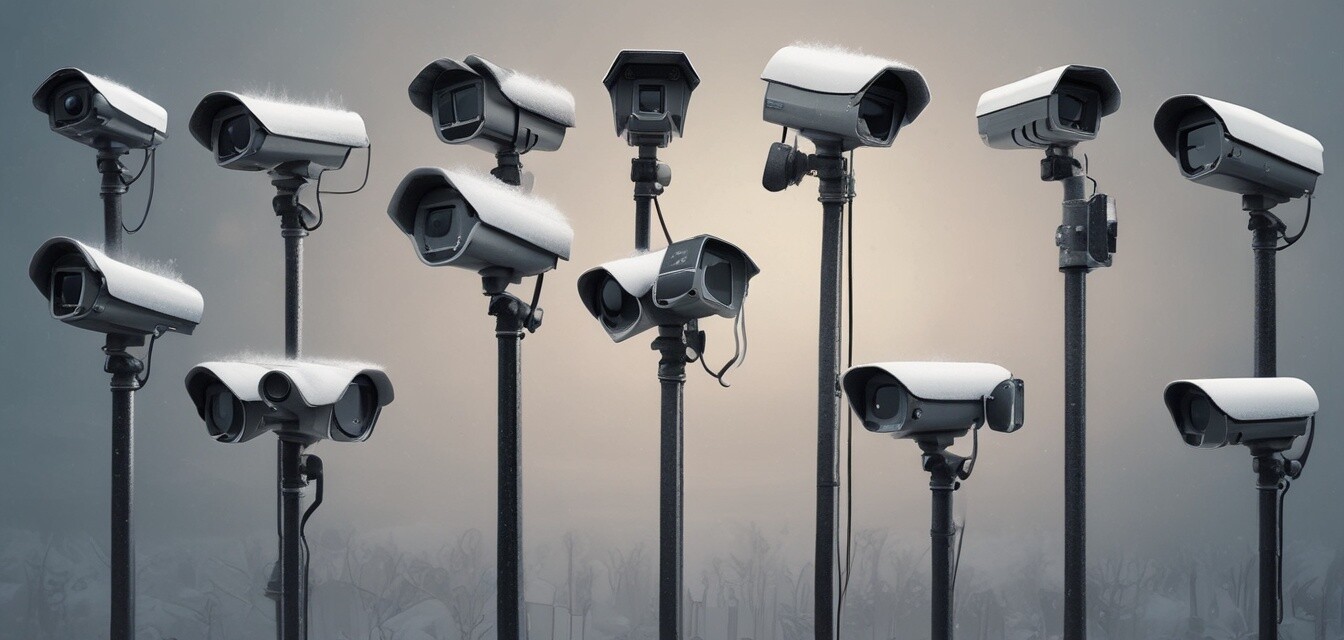
Choosing Cameras for All Weather Conditions
Key Takeaways
- Look for durable materials and IP ratings to ensure resistance to the elements.
- Choose models with night vision and motion detection for enhanced security.
- Consider temperature range ratings for extreme weather areas.
- Leveraging solar-powered options can reduce energy costs.
- Evaluate camera placement to maximize coverage and minimize exposure.
Choosing the right outdoor security camera can be challenging, especially with the variety of options available on the market today. It’s vital that these cameras not only provide crystal-clear images but are also resilient against the elements. This guide will help you navigate the selection of security cameras that can withstand rain, snow, heat, and other environmental challenges while ensuring the safety of your home.
Understanding Weather Resistance
Weather-resistant cameras are designed to function effectively in various conditions. When selecting a security camera, it's essential to understand key features that contribute to its durability:
- Ingress Protection (IP) Rating: Indicates the level of protection against solid and liquid intrusion. For example, an IP66 rating means protection from dust and heavy rain.
- Operating Temperature: Ensure that the camera can operate in the temperature range specific to your environment.
- Material: Look for cameras made from high-quality materials such as aluminum or high-grade plastic that can withstand the elements.
Types of Weather-Resistant Security Cameras
There are several types of outdoor security cameras designed to endure harsh weather conditions. Here’s a breakdown:
| Camera Type | Description | Best Use |
|---|---|---|
| Bullet Cameras | Long, cylindrical design often equipped with a lens for long-distance viewing. | Entry points and perimeters. |
| Dome Cameras | More discreet and vandal-resistant, fitted with a dome housing. | Indoor and outdoor settings. |
| PTZ Cameras | Pan-Tilt-Zoom capability allows for flexible surveillance areas. | Large open spaces like parking lots. |
Key Features to Consider
When it comes to selecting a weather-resistant security camera, keep in mind the following essential features:
- Night Vision: Ensure your camera has infrared capabilities for low-light environments.
- Motion Detection: Look for cameras with motion sensors that can alert you to potential activity.
- Two-way Audio: This feature allows for communication through the camera, adding another layer of security.
- Storage Options: Consider whether the camera supports cloud storage or local storage methods.
Installation Tips for Weather-Resistant Cameras
Proper installation can significantly enhance the functionality of your outdoor security cameras. Here are some tips:
- Placement: Install cameras at strategic locations to cover high-traffic areas and blind spots.
- Height: Mount cameras at a height that is difficult to reach but allows for decent visibility.
- Angle: Position the camera to avoid glare from the sun or reflections from any surfaces.
- Protection: Use protective housings if necessary, especially in extreme climates.
Maintenance of Weather-Resistant Cameras
Maintaining your outdoor security cameras ensures they remain effective. Here are some essential maintenance tips:
- Regularly clean the camera lenses to prevent image distortion.
- Check for any debris or obstructions that may block the camera’s view.
- Test the features periodically, including motion detection and night vision, to ensure they are functioning correctly.
Conclusion
Choosing the right camera for all weather conditions is crucial for ensuring the security of your home. By focusing on durability, the right features, and proper placement, you can significantly enhance the safety structures in your property. For more detailed advice on selecting security cameras that fit your needs, check out our comprehensive home security buying guides.
Pros
- Enhanced security in adverse weather conditions.
- Peace of mind knowing your property is monitored.
- Variety of models tailored to specific environmental challenges.
Cons
- May require higher initial investment.
- Installation can be challenging.
- Potential for false alarms in severe weather.
